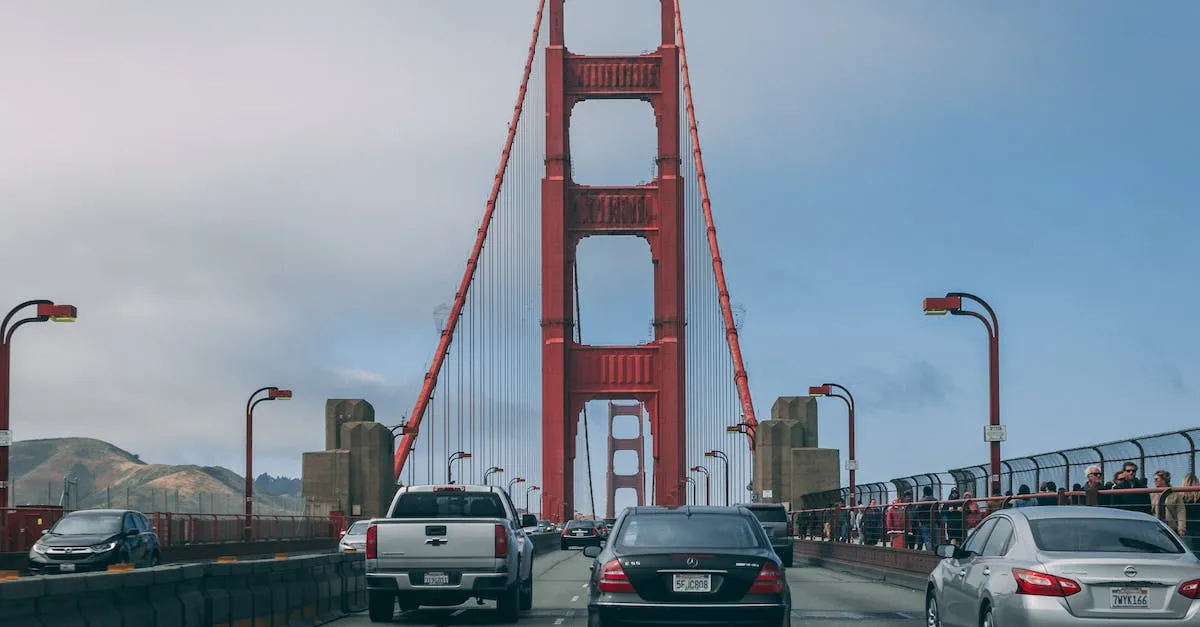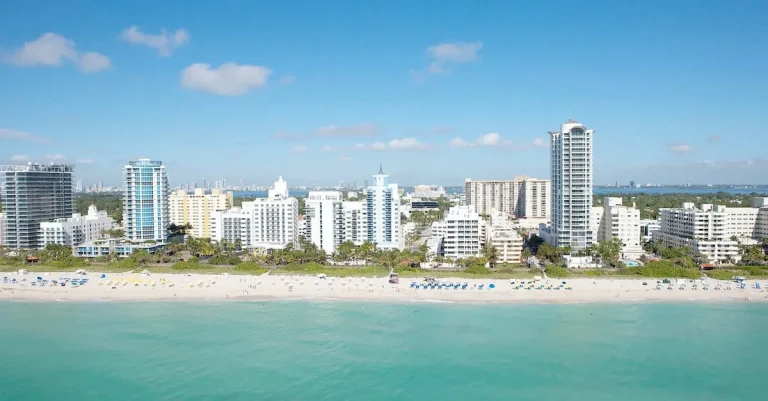The Ultimate Road Trip Guide: Driving From California To Mexico
With its incredible beaches, vibrant cities, and amazing cuisine, Mexico is an epic road trip destination from California. Driving south of the border offers the chance to immerse yourself in a different culture and see incredible sights.
If you’re short on time, here’s a quick answer to your question: Driving from California to Mexico requires crossing at a land port of entry, having your passport and paperwork ready, following major highway routes, getting Mexican auto insurance, and taking safety precautions.
This comprehensive guide covers everything you need to know to plan your California to Mexico road trip. You’ll learn about crossing the border, driving routes, vehicle permits, insurance, safety tips, and top destinations along the Pacific coast of Mexico.
Crossing the Border from California to Mexico
Planning a road trip from California to Mexico can be an exciting adventure. However, before embarking on your journey, it’s important to familiarize yourself with the process of crossing the border. Here are some key points to keep in mind:
California-Mexico Land Ports of Entry
There are several land ports of entry that connect California to Mexico, including San Ysidro, Otay Mesa, Calexico, and Tecate. These ports of entry are open 24 hours a day, allowing for convenient access to Mexico.
It’s recommended to check the wait times at each port of entry before you leave, as they can vary depending on the time of day and day of the week.
Passport and Entry Requirements
Before crossing the border, make sure to have a valid passport. All travelers, including U.S. citizens, are required to present a passport when entering Mexico. Additionally, it’s a good idea to carry a copy of your vehicle registration and insurance documents, as they may be requested at the border.
It’s worth noting that Mexico has specific entry requirements for pets. If you plan to bring your furry friend along on your road trip, make sure to check the regulations and have the necessary documentation, such as a health certificate, vaccination records, and an international microchip.
Importing Your Vehicle Temporarily
If you’re planning to take your vehicle to Mexico, you’ll need to obtain a temporary vehicle importation permit. This permit allows you to bring your vehicle into Mexico for a specified period of time, usually up to 180 days.
It’s important to note that the temporary importation permit can only be obtained at the border, so make sure to have all the required documents, such as your vehicle title, driver’s license, and a credit card for the deposit.
For more detailed information on crossing the border from California to Mexico, you can visit the official website of the U.S. Department of State at travel.state.gov. It’s always a good idea to stay informed and up to date with the latest travel advisories and regulations before your trip.
Driving Routes and Roads in Mexico
When embarking on a road trip from California to Mexico, it’s important to plan your driving routes and familiarize yourself with the roads in Mexico. Here are some popular routes to consider:
Highway 1 along Baja California
If you’re looking for a scenic coastal drive, Highway 1 along Baja California is a must-visit route. Stretching from Tijuana to Cabo San Lucas, this highway offers breathtaking views of the Pacific Ocean and the opportunity to explore charming coastal towns along the way.
Don’t miss the chance to visit Ensenada, known for its delicious seafood and vibrant nightlife.
Route 15 to Interior Mainland Mexico
If you prefer a road trip that takes you through the heart of Mexico, Route 15 is the perfect choice. This highway runs from the US-Mexico border near Nogales, Arizona, all the way down to Mexico City.
As you drive through the interior mainland, you’ll have the chance to experience the diverse landscapes and rich cultural heritage of Mexico. From ancient ruins to colonial cities, there’s something for everyone on this route.
Tolls, Gas Stations, and Road Conditions
Before hitting the road in Mexico, it’s important to be aware of tolls, gas stations, and road conditions. Mexico has an extensive toll road network, which offers a faster and safer option for long-distance travel. However, it’s essential to carry enough cash or a credit card to cover the toll fees.
Additionally, make sure to plan your stops at gas stations along the way, as they can be less frequent in some areas.
When it comes to road conditions, it’s always a good idea to check for any updates or warnings before your trip. The Mexican government provides information on road conditions through their official websites and social media channels.
Being prepared and informed will ensure a smooth and enjoyable road trip experience.
Vehicle Permits and Paperwork
When embarking on a road trip from California to Mexico, it’s important to be well-prepared with the necessary paperwork and permits for your vehicle. This will ensure a smooth and hassle-free journey across the border. Here’s everything you need to know about vehicle permits and paperwork:
Types of Vehicle Permits Needed
Before crossing the border into Mexico, you will need to obtain a Temporary Import Permit (TIP) for your vehicle. This permit allows you to bring your vehicle into the country for a specified period of time. The TIP is required for all vehicles, including motorcycles, RVs, and trailers.
It is important to note that rental vehicles already have a TIP included in the rental agreement, so you don’t need to worry about obtaining one separately.
Obtaining Your Temporary Import Permit
To obtain a Temporary Import Permit, you can either apply online or at the border. Applying online in advance is highly recommended as it saves time and ensures a smoother process at the border. The process typically involves filling out an application form, providing proof of ownership or a valid lease agreement, and paying the necessary fees.
Once approved, you will receive a sticker that must be displayed on your windshield during your stay in Mexico.
Additional Documentation Needs
In addition to the Temporary Import Permit, there are a few other documents you should have with you when driving from California to Mexico. These include a valid driver’s license, vehicle registration, and proof of insurance.
It is also advisable to carry a passport or other valid identification, as you will need to present these documents at the border.
Before embarking on your road trip, it’s a good idea to check the latest requirements and regulations regarding vehicle permits and paperwork. The official website of the Mexican Customs (www.aduanas.gob.mx) is a reliable source of information, providing up-to-date details on the necessary documentation and procedures.
Getting Mexican Auto Insurance
When embarking on a road trip from California to Mexico, it is essential to have Mexican auto insurance. This coverage is crucial to protect yourself and your vehicle in case of any unforeseen incidents or accidents while driving in Mexico.
Mexican insurance provides liability coverage, medical expenses, and damage to your vehicle, among other benefits.
Importance of Mexican Insurance
While your regular auto insurance may provide coverage within the United States, it is not valid in Mexico. Mexican law requires all drivers to have liability insurance from a company authorized to provide coverage in the country.
Without Mexican insurance, you could face legal troubles, hefty fines, and even have your vehicle impounded if you are involved in an accident.
Furthermore, Mexican insurance not only protects you legally but also financially. Medical expenses in Mexico can be incredibly high, and without insurance, you could be responsible for covering these costs out of your own pocket.
Additionally, in the event of a collision or theft, Mexican insurance will help cover the repair or replacement costs of your vehicle.
Required Minimum Coverage
The minimum coverage required by Mexican law includes liability insurance, which covers damages to third parties in case of an accident. The liability limits can vary depending on the state you are traveling to, so it is essential to check the specific requirements before purchasing your insurance.
While the minimum coverage is mandatory, it is highly recommended to consider additional coverage options to protect yourself adequately. This may include comprehensive insurance, collision coverage, and medical expenses coverage, among others.
These additional coverages can offer you greater peace of mind during your road trip.
Where to Buy Mexican Insurance
There are several options for purchasing Mexican auto insurance. One convenient way is to buy it online before your trip. Many reputable insurance providers offer online platforms where you can compare quotes, coverage options, and purchase your policy easily.
Another option is to buy insurance at the border crossing or in Mexican towns near the border. However, it is important to note that these options may not provide you with the same level of coverage or customer service as established insurance companies.
It is recommended to do your research and choose a reputable provider to ensure you have reliable coverage during your trip.
Some trusted websites where you can purchase Mexican auto insurance include Mexpro, Baja Bound, and MexAdventure. These websites offer a seamless experience, allowing you to easily compare different policies, coverage options, and prices.
Safety Tips and Precautions
Being Alert on the Road
When embarking on a road trip from California to Mexico, it is crucial to prioritize safety. One of the most important things to remember is to always stay alert while driving. Long hours on the road can lead to fatigue, so it’s essential to take regular breaks and switch drivers if possible.
Additionally, make sure to obey traffic laws, avoid distractions such as texting or talking on the phone, and use your seatbelt at all times. By staying focused and alert, you can minimize the risk of accidents and ensure a smooth journey.
Avoiding Risky Areas
While traveling through Mexico, it’s important to be aware of areas that may pose a higher risk to tourists. Stay informed about current travel advisories and avoid regions with a history of crime or violence.
It’s also advisable to research and plan your route in advance, choosing well-traveled roads and avoiding isolated or unfamiliar areas. By taking these precautions, you can significantly reduce the chances of encountering any potential dangers along the way.
What to Do in Case of Emergency
Even with the best preparations, emergencies can still occur. It’s essential to be prepared and know what to do in such situations. Carry a well-stocked emergency kit in your vehicle, which should include items like a first aid kit, flashlight, spare tire, and tools for basic repairs.
Familiarize yourself with the local emergency services numbers and have a map or GPS device handy to navigate to the nearest hospital or police station if needed. Additionally, consider purchasing travel insurance that covers medical emergencies and roadside assistance.
Being prepared can provide peace of mind and ensure that you are ready to handle any unexpected events that may arise.
For more information on road trip safety and travel advisories, you can visit the official website of the U.S. Department of State: https://travel.state.gov/content/travel/en/international-travel/International-Travel-Country-Information-Pages/Mexico.html
Top Destinations Driving from California
Embarking on a road trip from California to Mexico offers an incredible opportunity to explore a diverse range of destinations. From stunning beach towns to picturesque wine country and charming colonial cities, there is something for everyone along this scenic route.
Here are some of the top destinations to visit while driving from California to Mexico:
Beach Towns like Ensenada
Ensenada, located on the Baja California Peninsula, is a popular destination for beach lovers. With its beautiful coastline, Ensenada offers an array of activities such as swimming, surfing, and snorkeling.
Visitors can also indulge in fresh seafood at the local restaurants or enjoy a leisurely stroll along the malecón (boardwalk). Don’t miss the opportunity to try the region’s famous fish tacos, a culinary delight that will leave your taste buds wanting more.
For those seeking adventure, take a boat tour to see the iconic La Bufadora, a natural blowhole that shoots water high into the air.
Wine Country in Valle de Guadalupe
Valle de Guadalupe, often referred to as the Napa Valley of Mexico, is a wine lover’s paradise. This region is known for its extensive vineyards and award-winning wineries. Take a tour of the vineyards, learn about the winemaking process, and sample some of the finest wines produced in Mexico.
The picturesque landscape of Valle de Guadalupe adds to the charm of the wine country experience. Don’t forget to pair your wine tasting with a delicious meal at one of the many farm-to-table restaurants in the area, offering a unique culinary experience.
Colonial Cities like Guanajuato
Guanajuato, a UNESCO World Heritage site, is a colonial city that will transport you back in time. Its colorful buildings, narrow cobblestone streets, and stunning architecture make it a visual delight.
Explore the underground tunnels that were once used as a transportation system and marvel at the grandeur of the Teatro Juarez. The city is also home to the famous Callejón del Beso (Alley of the Kiss), where legend has it that couples who kiss on the third step of the alley will have seven years of happiness.
Immerse yourself in the vibrant culture of Guanajuato by attending a traditional Mexican festival or enjoying live music in one of the many plazas.
These are just a few of the incredible destinations you can explore while driving from California to Mexico. Each location offers its own unique experiences and attractions, making this road trip an adventure of a lifetime.
So pack your bags, hit the road, and get ready to create unforgettable memories in these amazing destinations!
Conclusion
With proper preparation, a road trip from California down to Mexico can be an incredible adventure. By crossing the border correctly, getting vehicle permits and insurance, taking safety measures, and following reliable routes, you’ll be ready to discover amazing pacific coast destinations.
The beautiful beaches, scenic drives, colonial cities, and amazing food and drink make a drive south of the border from California extremely rewarding. Use this road trip guide to start planning your route and California-to-Mexico driving adventure today!








